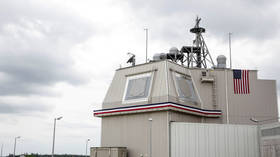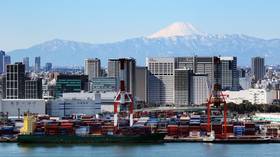US needles China with $2.1bn Aegis missile sale to Japan

The US State Department has approved the sale of two Lockheed Martin AEGIS Ashore ground-based anti-missile systems to Japan, the latest move in Tokyo’s ongoing military buildup that has set China on edge.
The proposed $2.15 billion sale, which includes related missile defense equipment also manufactured by Lockheed, was reported to Congress by the Pentagon’s Defense Security Cooperation Agency on Tuesday. Also approved was a related command and control processor refresh, which will be built by General Dynamics.
The AEGIS Ashore is the land-based version of the main US naval anti-missile system, which Japan already has on some of its destroyers. The batteries will be able to fire the SM-3 Block IIA/Block IB interceptors once deployed sometime around 2023, and will add the supersonic SM-6 interceptors to its arsenal by the end of the decade. The sites for the systems are expected to be in Japan’s Akita and Yamaguchi prefectures.
The deployment of AEGIS Ashore systems by US allies is a matter of controversy, since its launch system can be used to fire Tomahawk cruise missiles and other ordnance, effectively making them a potential offensive asset. Russia, for example, has been criticizing the decision to station this system in Poland and Romania for years, saying it puts a large part of European Russia within range of a surprise strike. China similarly objected to Japan’s plans to host the system when they were first announced in 2017.
Japan insists that the system is purely defensive and needed to protect the country from a possible missile strike by North Korea. That justification has not changed much in the past two years, despite the thaw in relations between Pyongyang and Seoul, the continuation of talks between North Korean leader Kim Jong-un and US President Donald Trump, and the fact that Kim hasn’t launched a nuclear-capable missile in over a year.
Also on rt.com In preparation for Trump’s ‘America First’ Doctrine, Japan unleashes $243bn defense spending planA defense spending document released in December laid out Tokyo’s plans to spend a record $243 billion to further beef up the Japanese military. Weapons purchases from the US account for a significant part of the plan, with Tokyo set to buy some 150 F-35 fighter jets of different variants and other expensive hardware.
If you like this story, share it with a friend!













